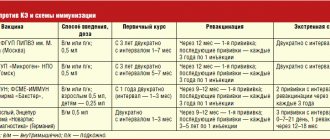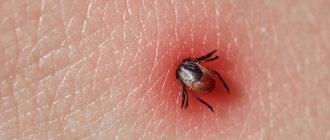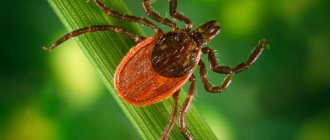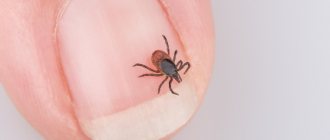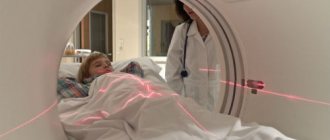The leading cause of viral encephalitis in Asia is Japanese encephalitis virus (JEV). This mosquito-borne flavivirus belongs to a genus of viruses that also includes dengue, yellow fever, and West Nile viruses. The first case of JE was reported in Japan in 1871.
The annual clinical incidence of this disease varies between and within countries, ranging from <1 to >10 per 100,000 population or higher during outbreaks. A recent literature review estimated that nearly 68,000 clinical cases of JE occur annually worldwide, with deaths from the disease ranging from 13,600 to 20,400 cases. JE mainly affects children. Most adults in endemic countries have natural immunity from childhood infection, but the disease can affect people of any age.
Signs and symptoms
Most cases of JE virus infection are mild (with fever and headache) or no obvious symptoms, but about 1 in 250 cases of infection is severe. The incubation period ranges from 4–14 days. In children, the most common initial symptoms of the disease may be pain in the lower abdomen and vomiting. The severe form is characterized by rapid development of high fever, headache, neck stiffness, disorientation, coma, spasms, convulsions, spastic paralysis and possible death. Among symptomatic individuals, the case fatality rate can be as high as 30%.
Among survivors, 20-30% suffer from persistent cognitive, behavioral or neurological problems such as paralysis, recurrent convulsions or loss of speech.
Exodus
Death due to mosquito encephalitis can occur in a coma state. The comatose state is the most dangerous. Fainting and disturbances of consciousness are reversible phenomena.
With the development of bacterial lung damage, the outcome depends on the further course of the disease. The best outcome is recovery. Or long-term remission.
Recovery occurs as a consequence of proper treatment. Timely prevention improves the course of the disease. And complex treatment guarantees stable remission.
go to top
Transmission of infection
24 countries in the WHO South-East Asia and Western Pacific Regions are at risk of JE transmission, affecting more than three billion people.
JE is transmitted to humans through the bite of infected Culex mosquitoes (mainly Culex tritaeniorhynchus). Once humans are infected, they do not develop sufficient viremia to infect mosquitoes when feeding. The virus exists in a transmission cycle between mosquitoes, pigs and/or waterfowl (enzootic cycle). The disease is mainly found in rural and suburban areas where people are close to these vertebrates.
In most temperate zones of Asia, Japanese encephalitis virus (JEV) is transmitted primarily during the warmer months, when large epidemics can occur. In tropical and subtropical areas, transmission can occur year-round, but in rice-growing areas it often increases during the rainy season and before harvest.
Lifespan
With mosquito encephalitis, life expectancy depends on the course of the disease. With a protracted course of a hidden nature, life expectancy decreases. The treatment process also influences life expectancy.
Only properly selected therapy allows us to talk about the improvement of the patient’s condition. And also about increasing life expectancy. In severe brain disorders, loss of ability to work may occur.
Disability reduces quality of life. As a result, a person may experience great anxiety about their condition. And these neurotic disorders caused by this anxiety reduce life expectancy!
Diagnostics
Persons who live in or have traveled to an area where JE is endemic and become ill with encephalitis are considered suspected cases of JE. Laboratory testing is required to confirm JE infection and exclude other causes of encephalitis. WHO recommends testing for JE-specific antibodies in a single cerebrospinal fluid (CSF) or serum sample using the IgM capture ELISA. Testing a CSF sample is preferred because it reduces the likelihood of false-positive results due to previous infection or vaccination.
Surveillance for this disease is primarily syndromic surveillance for acute encephalitis. Confirmatory laboratory testing is often performed at designated sentinel sites, and efforts are being made to expand laboratory-based surveillance. Case surveillance has been established in countries that are effectively combating JE through vaccination.
Live vaccines
Live vaccines are a method of stimulating the immune system by introducing weakened viruses into the body, discovered back in 1796 by the English physician E. Jenner. Since then, a live vaccine against the yellow fever virus has been obtained, which differs from highly pathogenic strains by numerous nucleotide substitutions in the genome; The search for weakened strains of Dengue, West Nile and Langat flaviviruses continues for the development of live vaccines based on them.
Attempts have been made to create a live vaccine against the tick-borne encephalitis virus. In 1957, it was decided to use a weakened strain of the Langat
, which causes the body to produce antibodies similar to antibodies to TBEV. However, it turned out that when administered intracerebrally, this strain itself becomes pathogenic and causes encephalitis and atrophy of areas of the brain without external clinical manifestations. Subsequently, weakened strains of TBEV itself were discovered, but, unfortunately, they all turned out to be genetically unstable.
Here is a tragic example of the use of live vaccines against TBEV. In 1969, a weakened strain of tick-borne encephalitis virus was isolated from a patient who, after a tick bite, had no clinical manifestations of the disease for 4 years, but had high antibody titers in his blood. Laboratory studies revealed its low neurovirulence, after which clinical trials were conducted on volunteers, which yielded positive results. Ultimately, about 650 thousand people were immunized with a weakened strain of TBEV. However, 35 vaccinated people suffered severe complications in the form of meningitis and meningoencephalitis, and in 22 of them, severe consequences of the disease remained for life, and one person died. The use of this strain as a live vaccine was discontinued (Timofeev, Karganova, 2003).
Prevention and control
Safe and effective vaccines against JE are available to prevent the disease. WHO recommends robust JE prevention and control measures, including immunization against JE in all areas where the disease is a recognized public health priority, along with strengthened surveillance and reporting mechanisms. Where the environment is favorable for transmission of JE virus, vaccination should be considered even if the number of confirmed cases of JE is small. Few data suggest that interventions other than human vaccination can reduce the burden of JE. Therefore, human vaccination should be given priority over pig vaccination and mosquito control measures.
There are 4 main types of JE vaccines currently in use: inactivated mouse brain cell vaccines, inactivated Vero cell vaccines, live attenuated vaccines, and live recombinant vaccines.
In recent years, the live attenuated vaccine SA14-14-2, produced in China, has become the most widely used vaccine in endemic countries and was prequalified by WHO in October 2013. Inactivated cell culture vaccines and live recombinant vaccines based on the yellow fever vaccine strain are also licensed and prequalified by WHO. In November 2013, the GAVI Alliance launched a funding channel to support JE vaccination campaigns in eligible countries.
All travelers to areas where Japanese encephalitis is endemic in Japan should take precautions against mosquito bites to reduce the risk of contracting JE. Personal prevention measures include using repellent, wearing long sleeves, mosquito coils and vaporizers. People traveling for extended periods of time to areas where JE is endemic are recommended to be vaccinated.
Forecast
With mosquito encephalitis, the prognosis depends on many circumstances. First of all, the state of reactivity of the body. If it is violated, then the prognosis is worst. If the body’s reactivity is strong, then the prognosis is good.
The cause of the disease also influences the prognosis. The most unfavorable prognosis is for a mosquito bite. Especially if the person was not vaccinated. When contacting animals, favorable prognoses are possible.
The clinical picture of the disease should be taken into account when determining prognosis. With the development of relapses, the prognosis worsens. In their absence, good prognosis is possible.
go to top
Disease outbreaks
Major outbreaks of JE occur every 2-15 years. JE transmission increases during the rainy season when the vector population increases. However, there is still no evidence of increased JE transmission after major floods and tsunamis. The spread of JE into new areas is correlated with agricultural development and intensive rice cultivation using irrigation systems.
WHO is responding as follows:
- Formulates global recommendations to combat JE, including the use of vaccines. WHO recommends and supports immunization against JE in all regions where the disease is a recognized public health problem.
- Provides technical support for JE surveillance, JE vaccine introduction and large-scale JE vaccination campaigns, and evaluation of JE vaccine effectiveness and program impact.
Treatment
For mosquito encephalitis, treatment is aimed at using antiserum. Antiserum allows you to cope with the disease. Especially in the initial period of its development.
Intravenous infusions are also effective. Infusions are carried out using a glucose solution. Glucose solution is usually used in a forty percent ratio. But the dosage calculated per day matters.
A sick person should receive fifty milliliters per day. Subcutaneous injection of saline is widely used. But there is a limit on its quantity. Usually up to one and a half liters per day.
In the treatment of mosquito encephalitis, vitamins are taken. Vitamins are necessary to stimulate the body's protective properties. The most commonly used vitamins are C and B1.
The treatment process for this disease can be aimed at the use of antiviral drugs. With a wide range of antiviral drugs available, it is necessary to choose the most preferred drug. This applies to the following reactions:
- the sensitivity of this virus to the drug;
- presence of adverse reactions;
- presence of contraindications.
At the same time, sedatives are indicated. In cases of increased arousal. If there is pain, it is appropriate to use local anesthetics and painkillers designed for an internal effect. Although with this disease there is practically no pain.
go to top
Causes
The causative agent of the disease is a specific neurotropic arbovirus. It is highly resistant. Frozen can remain alive for a year. It dies after two hours at boiling temperature. Disinfecting alcohol or acetone-containing liquids destroy it in three days. The carriers are mosquitoes Aedes togoi, Aedes japonicus, Culex pipiens, Culex trithaeniorhynchus. With their bite, the pathogen enters the human body. The disease has a clear seasonality. It is associated with the breeding season of mosquito vectors. The outbreak takes about 50 days. It falls in August-September. Men who work in wetlands of an endemic area are at risk. The likelihood of an epidemic is increased by heavy rainfall and a hot climate.
Whether infection occurs in the event of a bite depends on several factors:
- The amount of virus ingested.
- Degrees of virulence.
- Resistance of the macroorganism.
- Conditions of the human immune system.
The death of the source of the disease often occurs at the site of the bite. Otherwise, it reaches the blood-brain barrier perineurally or through the bloodstream. When the body overheats, the source of infection easily penetrates through it. After the BBB, the virus enters the brain matter. Actively multiplying, causes the death of neurons. In severe forms, generalization occurs. The pathology extends beyond the nervous system.


